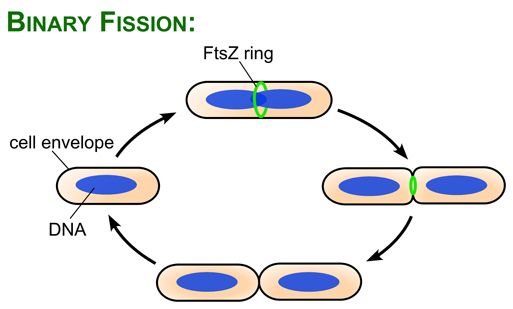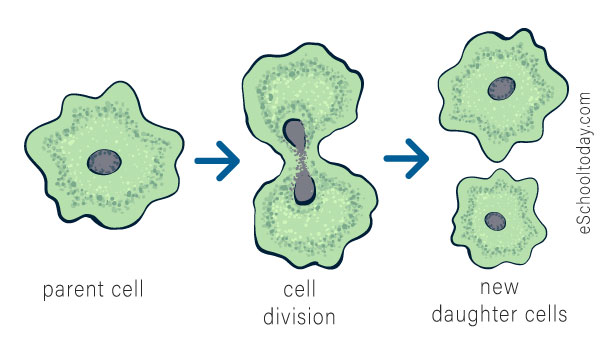

The outgrowth is called the bud and it eventually gets separated from the mother cell by a partition wall. At the same time, the nucleus also undergoes division where one part with some cytoplasm enters the swelling and the other part remains with the mother cell. In this method of reproduction, the bacterial cell develops a small swelling at one side which continuously increases in size. Each conidium detaches from the mother and germinates in an appropriate substratum, producing a new mycelium. Conidiophore is the portion of the filament that contains conidia. Conidia are small, chain-like, spherical, spore-like entities created by a transverse wall at the terminals of filaments. Conidia production can be seen in filamentous bacteria such as Streptomyces. This type of asexual reproduction is also called fragmentation.

The part bearing the conidia is called the conidiophore and after it is detached from the mother cell, in a suitable substratum it germinates giving rise to new mycelium. The formation of conidia takes place in filamentous bacteria such as Streptomyces through the formation of a transverse septum at the apex of the filament. The cell membrane pinches inward toward the middle of the bacterium once it has nearly doubled in size. The distance between the two DNA molecules grows as the cell grows and elongates.

The single DNA molecule duplicates in this sort of asexual reproduction, and both copies bind to the cell membrane at distinct places. It is a rapid process and takes minutes to complete.īinary fission is used by most bacteria, including Salmonella and E.coli.

These two strands of DNA are then moved to the different poles of the cell and a transverse septum then takes place and develops in the middle region of the cell which separates the two new daughter cells and thus binary fission I completed. The circular double-stranded DNA of the bacteria undergoes replication and new complementary strands are formed. At first, the bacterial cell reaches critical mass in its form and cell components. In binary fission, a single bacterial cell divides into two daughter cells. In asexual reproduction in bacteria, there are five following types of Asexual reproduction: In this topic, we will have a brief overview of all types of means of reproduction in bacteria. However, they do show both sexual and asexual means of reproduction. A bacterial population grows in a geometric or exponential fashion, with each division cycle (generation) producing two cells, four cells, eight cells, sixteen cells, 32 cells, and so on. Since they are unicellular and do not have a well-organized cell, bacteria have been grouped under prokaryotes. Just like any other organism, bacteria also reproduce to continue their species. A sexually reproducing animal is a sea turtle, an asexually reproducing organism is a volvox (green algae), and a brittle star can reproduce in either way. One parent copies itself to produce genetically identical kids in asexual reproduction. When an organism reproduces sexually, it integrates genetic material from both parents to create a genetically unique organism. Sexual and asexual reproduction are the two most common types. It is due to mature time of the offspring, which is different in the two mechanisms.Offspring are produced through reproduction. Number of cells N as function of time t for binary fission shows a smooth curve compared to budding which produce a step-like curve. The former force holds for r ij 1 that two or more clusters of cells are collapsing to produce single cluster. There are only two force types are considered, which are normal force as the repulsive force and a gravitational-like force as the attractive force. There is also reproduction period after a cell is mature, which is the time it repeats the reproduction process. Cell requires to grow until it reaches its mature state and then it can reproduce an offspring through one of the two mechanisms. Budding will produce smaller size of offspring, while binary fission will produce offspring with the same size as its parent. These two mechanisms have different steps in producing the offspring. The first is budding and the second is binary fission. Simulation of cell asexual reproduction is performed through two different mechanisms in this work.


 0 kommentar(er)
0 kommentar(er)
